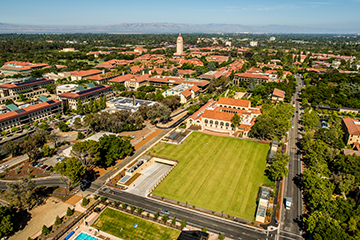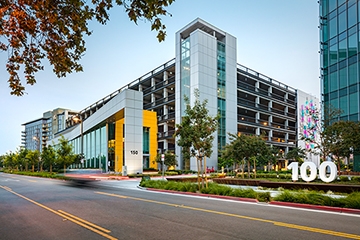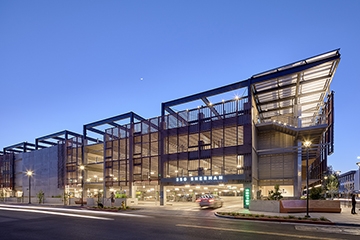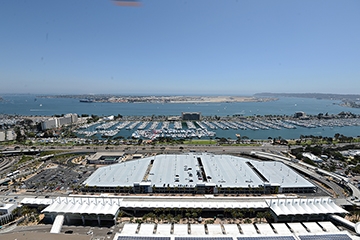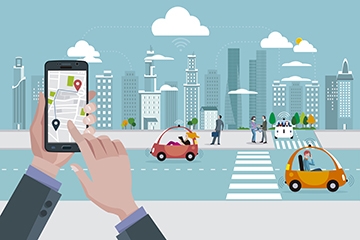With over a million electric vehicles on the road across the US and a million more expected within the next three years, the future of EV is bright. Nowhere is this more evident than in the state of California, where 7.1% of new car sales are electric. In Palo Alto, home to Tesla, that number is a whopping 30%.
Supporting this upward trajectory is about more than simply selling new cars. It’s also about providing the infrastructure needed to charge them. A report from the Institute for Electric Innovation and Edison Electric Institute estimates that by the year 2030, we will need 9.6 million charging ports to support over 18 million EVs across the US.
So, what does this mean for parking and mobility infrastructure? Understanding the current challenges posed by EV charging technology will help us identify solutions that will forge a smoother path into the future.
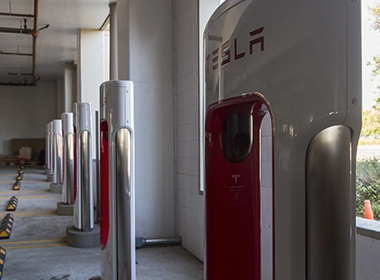
Creating the Right Incentives
Charging stations and electrical capacity that add to the cost of a project can create a disincentive for owners to adapt, especially in areas where EV adoption has been slower to catch on. In California, code requirements have served as a driving force for change. The state requires that 3% of parking for residential and 6% for nonresidential development must accommodate EV. In some cities, that requirement is considerably higher. San Francisco requires parking for new residential development be 100% EV compatible.
While setting ambitious requirements have helped pave the way for the infrastructure needed to support EV, the road has not been without a few speedbumps. In some cases stricter requirements have made it a challenge to remain flexible with new and emerging charging technologies, and to present the most efficient solutions for less conventional parking methods like valet, mechanical and automated parking.
The Charging Challenge
Because EV technology is evolving rapidly, not all chargers are created equal. Currently, there are two primary types of EV charging stations. Level 2 chargers, the most common, operate on a 240V AC plug and require 4-6 hours to fully charge an electric battery. Level 3 charging stations, known as DC Fast Chargers, operate on a 480v direct current plug and can provide an 80% charge in as little as 30 minutes.
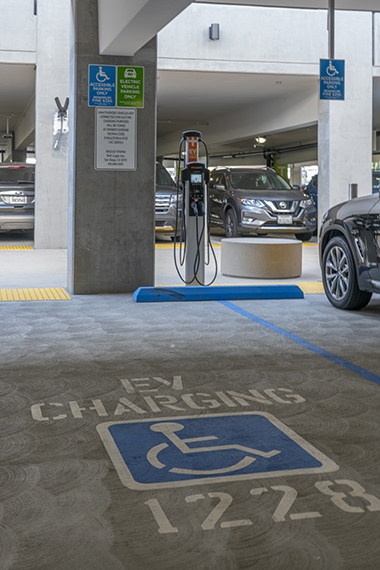
While far more efficient, DC Fast Chargers are not without their drawbacks. Unlike Level 2 chargers, which are compatible with all electric and hybrid vehicles, DC fast chargers have more limited compatibility as they lack an industry standard. They also incur greater upfront costs. However, when operated properly they can be more cost efficient than Level 2 charging.
In the heart of Silicon Valley, where tech companies have proven to be willing adopters, providing EV charging for employees brings up another challenge: how to use charging stations efficiently. When EVs are parked in the same spot for extended periods, a stationary, fully charged car results in a charger that isn’t being utilized.
One solution is to implement duel chargers, which can charge two cars at the same time. Other systems can share a charger among multiple cars by charging one and then moving the charger cable to another. If DC fast chargers are utilized, this increased charging capability combined with a valet program that moves cars to new parking spaces once they have finished charging ensures that a greater number of cars can be charged at each station throughout the day.
Electrical capacity is another issue. Especially at a workplace or residential development, EV chargers experience peak loads that at certain times of the day that create imbalanced and inefficient electricity needs. Load management options that provide more electrical power to cars with a lower charge and trickle charge those that are closer to full can use power more efficiently and thereby reduce costs.
Merging EV with Automated Parking & Driverless Cars
It’s one thing to design EV charging stations for a stationary parking spot. What happens when the parking space isn’t stationary? Dense, urban city centers that are turning to mechanical and automated solutions to create efficient parking solutions, which introduces the challenge of an EV charging system that is compatible with a moving platform. In cases where a car is parked on a pallet or lift and remains on the same pallet regardless of where it is stored, an EV charging station can be added to the pallet.
Fully automated garages that move cars without a pallet pose a bigger challenge, as the space is often for storage only and there is no human occupancy other than for repairs and maintenance. Therefore, a human cannot be present to connect a charging cable.
A lack of a universal standard both for EV charging ports and their location on a given vehicle adds another layer of complication. In order for EV charging to be compatible with a mechanical or automated parking system, it must be inherently flexible and adaptable.
Driverless cars will pose another charging challenge. Without human handlers, charging an electric autonomous vehicle will require an additional level of automation. Hyundai recently unveiled a charging concept that utilizes an automated valet parking system to charge driverless vehicles. While solutions for these challenges are in development, we still have a long way to go.
Cutting the Cord
Wireless charging could open the door to a completely new method of charging EVs by eliminating the need for charging stations all together. In 2017, Qualcomm demonstrated a wireless dynamic electric vehicle charging system that allows vehicles to charge while driving. The ability to charge without stopping at a charging station would pose a tremendous advantage for autonomous ridesharing and taxi fleets and potentially shift or eliminate the need to integrate EV into parking design.
As the technology itself is still a long way off from being commercially viable, such a transformation isn’t likely to happen anytime soon. If and when it does become available, the cost, efficiency and speed benefits of wired cables aren’t likely to be rendered obsolete much in the same way that most cell phone users still rely on wired charging technology despite the availability of wireless. However, it’s an important reminder that without a crystal ball, the only thing we know for sure about the future of electric vehicles is that change is coming. As the industry continues to take shape, we need to be prepared to adapt to whatever that future brings.



